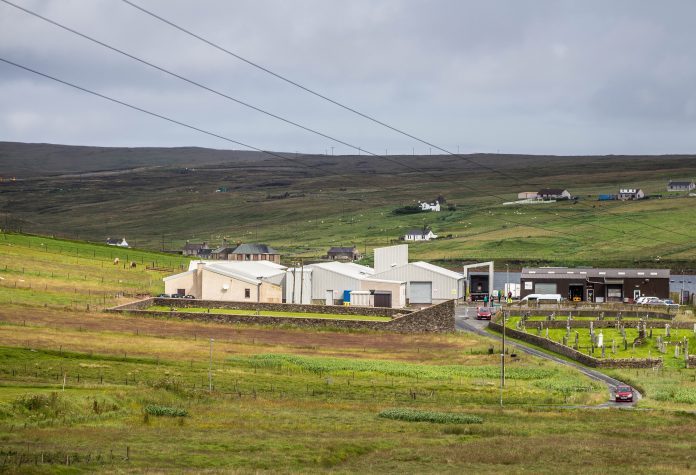Cooke Aquaculture is demanding SEPA, the Scottish Environmental Protection Agency, correct a report that suggests is was pouring raw effluent from a primary processing plant into Mid Yell Voe, a local waterway.
A BBC report — reflexively headlined “packing factory leaks blood water into the sea” — appeared to draw from a seemingly similar incident in British Columbia, where a primary plant approved by the province was found to be emitting effluent into a river. The incident prompted a round of new rulemaking in the province.
Now SEPA has found “odor” and apparent proof of discharge at Cooke’s plant at Mid Yell in the Shetlands.
Inspector’s visit
Cooke denies discharging untreated waste water from Mid Yell, however the BBC filed an access to information request that revealed a member of the public had reported to SEPA “weekly offensive smell complaints from locals, the school and tourists”. An inspector’s visit found the Yell island facility was releasing bloody overflow water “from tanks discharging into Mid Yell Voe”.
SEPA, the BBC reported, concluded that only “small quantities” of effluent were leaked into the sea. However, SEPA’s advice to the Scottish Government is that effluent can spread infection salmon anemia.
Environmental organizations are reportedly wanting Cooke’s expulsion from its salmon-farming peer advocacy organizations for “violations of environmental regulations”.
“I think it is a huge embarrassment for the company,” the BBC quoted Don Staniford from the Global Alliance Against Industrial Aquaculture as saying.
Dirty filter
However, newly in-place general manger of the Scottish Salmon Producers Organization, David Sandison, said that August 2017 visit by SEPA compelled Cooke to take steps. Cooke, for its part, was unapologetic, with a spokesperson saying, “Cooke Aquaculture Scotland has never discharged untreated wastewater from its Mid-Yell packing facility and the company has requested that the Scottish Environment Protection Agency (Sepa) correct errors in their report noting otherwise.”
“The odour came from treated water foam in a manhole at the facility. The wastewater had been treated through two filter processes and ozonation. The wastewater had an odour but it was not untreated as the SEPA report states,” the company said.
Cooke said the offensive manhole was made taller; a regular filter cleaning schedule was started, and lids were added to their holding tanks to contain odor.

